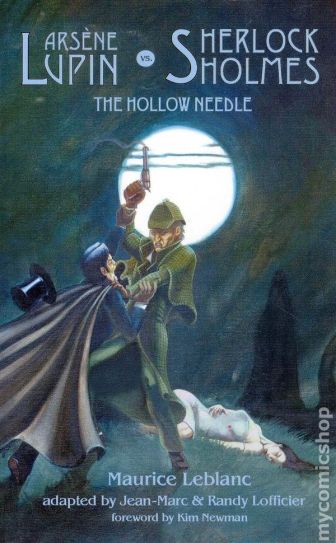Lest this blog become an endless series of complaints about media I like enough to keep consuming, but not enough to stop whining about, I put together some posts on things I love unreservedly. First up: gentleman thieves.
Raffles was the genre’s trendsetter, created by E.W. Hornung as a criminal foil to his brother-in-law’s Sherlock Holmes. Like Sherlock, Raffles had a partner and biographer named Bunny… but since Hornung was quite public about the fact that he borrowed heavily from his good friend Oscar Wilde when it came to Raffles’ signature style, the exact nature of their relationship is questionable. And by questionable, I mean almost certainly gay.
My favorite thing about the Raffles stories is how modern they feel, even though they’re over a hundred years old. Raffles was the hipster of his age: over-educated, under-employed, always grasping for the truly comfortable life that was within sight but just out of reach for the English not-quite-aristocracy. Apart from some uncomfortable Victorian-era racism, he was remarkably progressive for his time, and many of his observations on love and money still ring true today.

Maurice LeBlanc started his Arsene Lupin series off with all the morality of his main character: by shamelessly ripping off E.W. Hornung and borrowing the character of Sherlock Holmes without permission. Raffles was a social climber, but Lupin only imitated the rich in order to punish them. His style was immaculate, his one weakness was pretty ladies, and he solved crimes about as often as he committed them. Modern audiences may know him best as the grandfather of Lupin III.

Scott Lynch’s Gentleman Bastards series is set in a fantasy world heavily inspired by the machinations of Italy’s decadent city-states. Our heroes are Locke Lamora, a con man without the good manners to die when his enemies ask him to, and his foul-mouthed renaissance man sidekick Jean Tannen. Locke is the craziest thief on this list by far: priest of a crooked god, accidental pirate, first on the hit list of the world’s most powerful mages, and a man who’s very interested in chairs.

Lynn Flewelling’s Nightrunner stories are everything I ever wanted in an high fantasy series. Warrior ladies! Polyamorous wizards! A fast-paced mix of action and intrigue! And of course, gentlemen with the requisite mysterious backstories and bad boy reputations. Seregil is one of my all-time favorite fantasy characters: he’s clever and pretty, but also deeply flawed, and his quest to make his sidekick/lover Alec over in his image is sometimes noble and sometimes a reflection of his own messed up life.
I want to make a special point of giving Lynn Flewelling props for avoiding my least favorite trope in queer romance. It’s all too easy to cast “manly” men as the heroes, even in stories that are ostensibly queer friendly; “girly men” usually get to be side characters at best and villains at worst. Seregil is unapologetically swishy, and he’s also the guy who just keeps saving the world. Deal with it.
